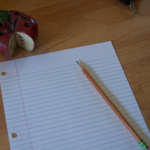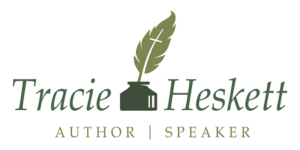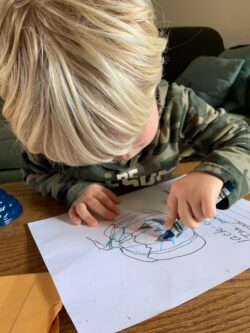What should I teach?
Early in my education career, I discovered standards. Many resource books and textbook and curriculum assignments later, I’ve spent hours in first McRel (Mid-Continent Research for Education and Learning) International standards and now Common Core State Standards (CCSS), along with state-specific standards that were nationally recognized as helpful for curriculum and textbook development. In the process of writing classroom resource books (that include standards), I’ve created simplified documents that break down the standards by grade level.
Standards describe what students need to know and be able to do. It’s that simple. 
Specifically, the Common Core State Standards aim to prepare students for college and/or the work force after high school.
Common Core State Standards (CCSS) focus on reading and writing. The idea is to develop literacy skills to apply to learning concepts in other disciplines, such as social studies and science. There is a separate CCSS document for math (another topic for another day). Many public school science programs also incorporate Next Generation Science Standards.
These academic standards and standardized tests have become a permanent fixture in education, and home school families aren’t exempt. Initially, educational psychologists believed standardized tests could help educators determine student needs and the most effective teaching strategies to meet those needs”1 In an ongoing effort to ensure students learn what they need to know, federal legislation now mandates annual testing of students in grades 3-8 in key academic areas.2
Standards-based instruction refers to curriculum and academic content based on a particular set of academic standards. Aside from ensuring our children will have a smooth transition back to public school should that time come, we want their learning to have authentic applications. Standards offer a way for students and their teachers to have “meaningful, engaging, and individualized learning experiences.”
How this works in practice is that standards-based instruction guides teachers as they plan specific goals and objectives for student learning. Since standards state what students need to be able to learn and do, we can use them as a starting point for planning instruction.
Here’s an example of how standards inform what to teach. Consider a social studies topic you’ve determined your child needs to learn, for example, important historical events in your community, state, or country (depending on developmental level).
One of the grade 3 informational text reading standards states,
students will describe the relationship between a series of historical events.
The authentic life application implied here is that children will learn how cause and effect works.
Because _____ happened in our community, then _____ happened.
- Because our community was founded by a man who used to live in Scotland, now we have a highlander festival every year.4
Once children have an introduction to cause and effect, they continue to develop their understanding through the grade 4 standard,
students will explain events [and] ideas in a historical text, including what happened and why, based on specific information in the text.
This event happened because _____
- A highway was built so people did not have to ferry their cars on the river to go from one city to another.5
The next step in this learning process is to explore how
people, events, and ideas interact with and affect each other (grade 5).
- When the river flooded, the bridge and roads were washed away. The only way people could get from one place to another was to walk along the railroad tracks because the steamers would not travel upriver since they didn’t know if they could get through.5
After reading an informational text and interacting with it based on one or more standards, they can discuss how and why this makes a difference to them.
- My family enjoys going to the highlander festival to hear different music and eat different food.
- It’s important to keep bridges in good shape so we can cross the river to go from one place to another.
- The weather affects what people can do and build and how they live.
- If trucks and boats cannot come to our community, they would not bring the things we need that we don’t have here.
Notes
1. J. Harris. What Every Parent Needs to Know About Standardized Tests: How to Understand the Tests and Help Your Kids Score High! (New York: McGraw-Hill, 2002). page 3.
2. No Child Left Behind Act of 2001, Part A — Improving Basic Programs Operated by Local Educational Agencies, Subpart 1 Basic Program Requirements, Section 1111. State Plansb) 2.A) http://www.ed.gov/policy/elsec/leg/esea02/index.html
3. Mid-Continent Research for Education and Learning, 2010.
4. “Kelso.” Encyclopaedia Britannica. https://www.britannica.com/place/Kelso-Washington
5. The Historic Pacific Highway in Washington. “A History of Kelso, Washington.” (2011-2021) https://www.pacific-hwy.net/kelso.htm

